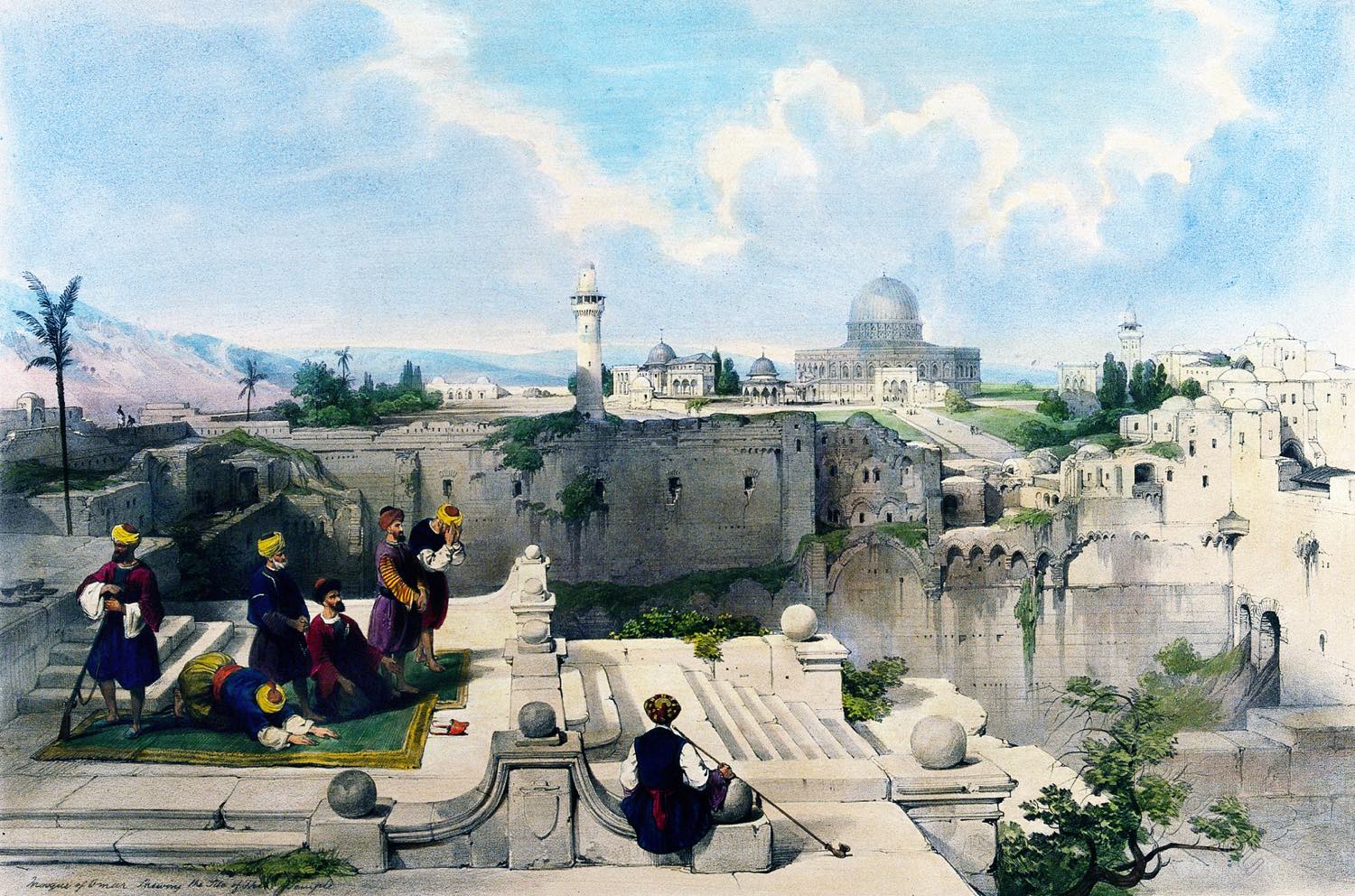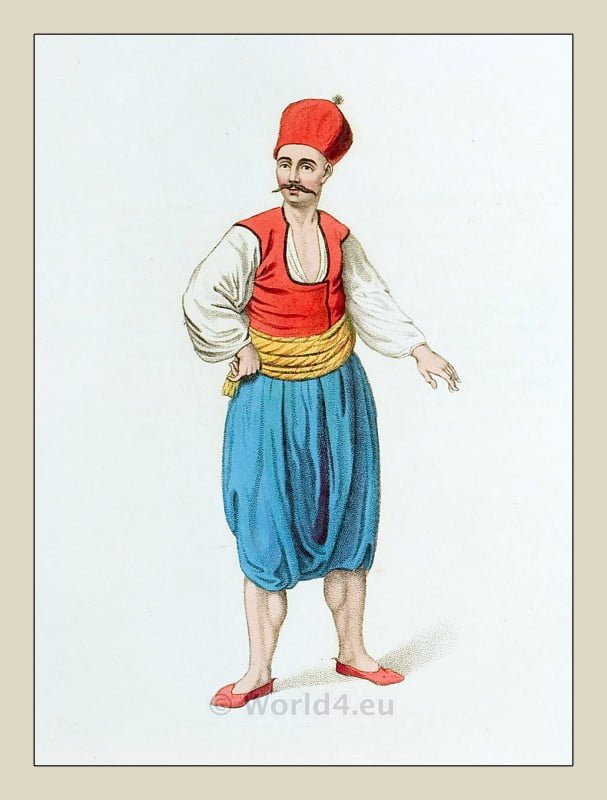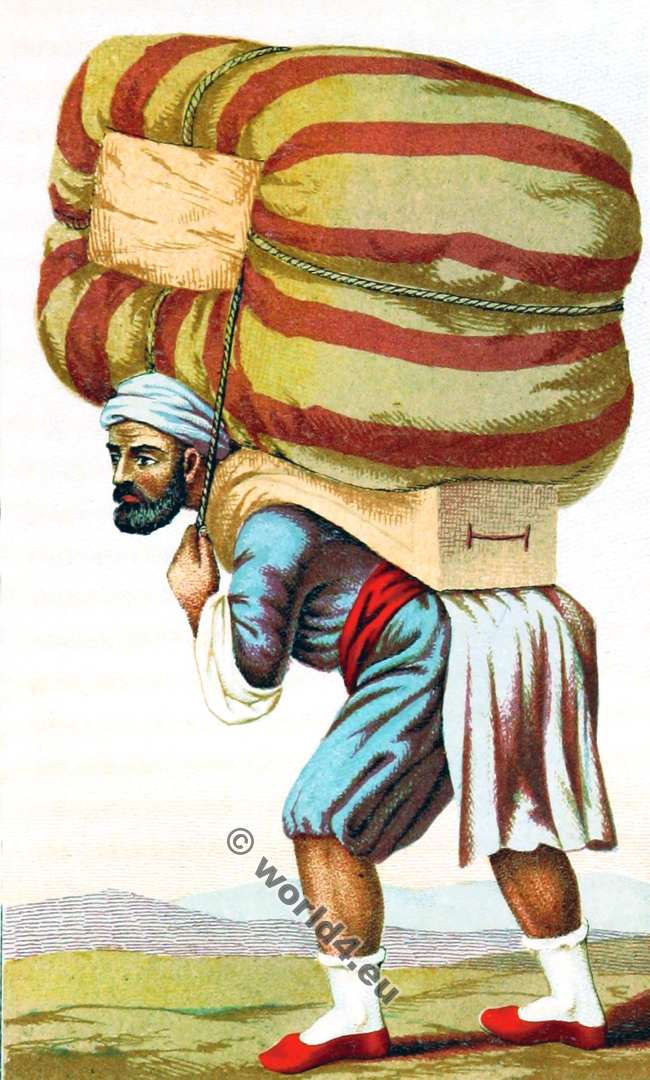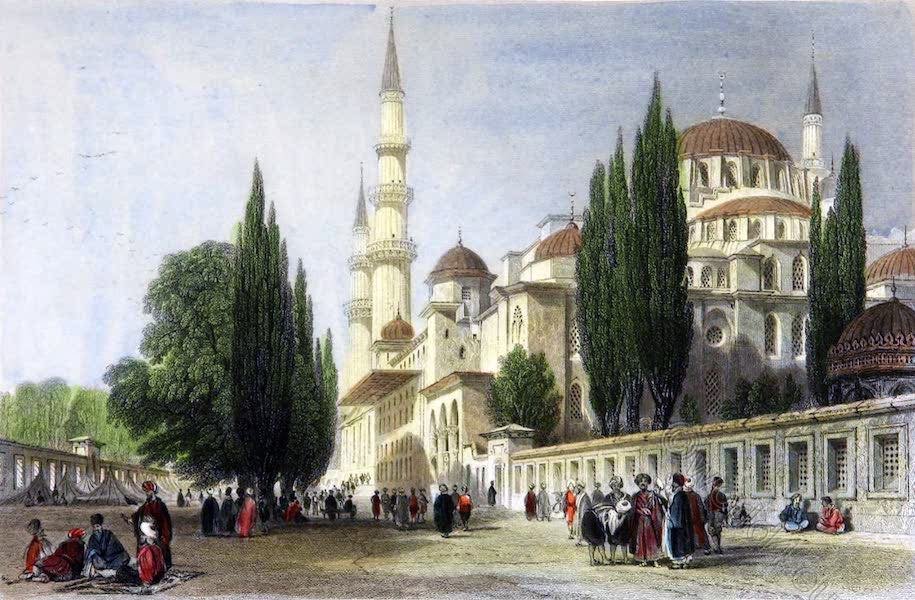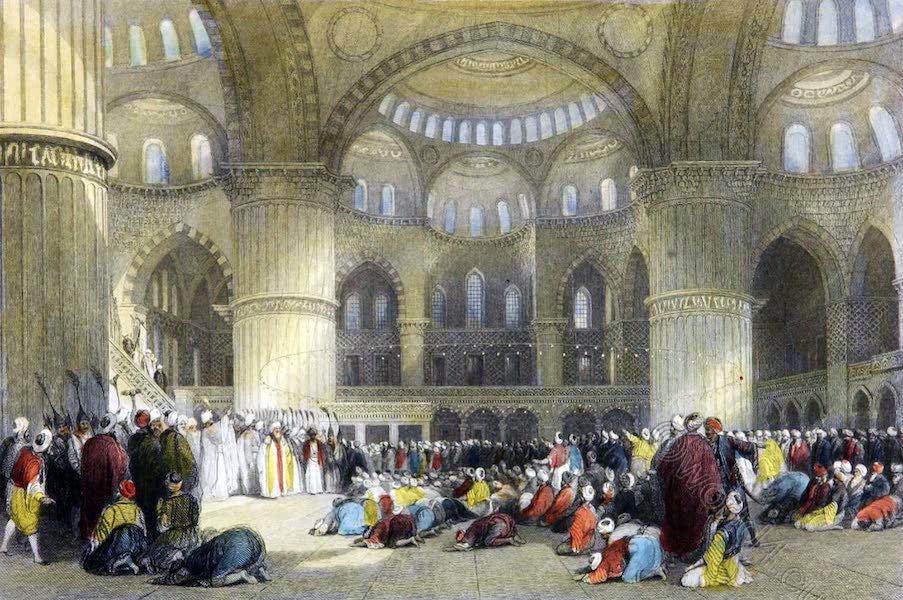
The Sultan Ahmed Mosque (Turkish: Sultan Ahmet Camii) in Istanbul was commissioned by Sultan Ahmed I in 1609 and built by 1616, a year before the Sultan’s death, by Sinan’s pupil Mehmet Ağa, it is a major work of Ottoman architecture.
In Europe, it is known as the Blue Mosque because of its abundance of blue and white tiles that adorn the dome and the upper part of the walls, but are younger than the building itself.
More significant from an art-historical point of view are the tiles on the lower part of the walls and the stands: they date from the heyday of İznik faience and show traditional plant motifs dominated by shades of green and blue. The painting of the interior was changed to pink.

MOSQUE OF SULTAN ACHMET.
The Sultan Ahmed Mosque in Istanbul. Known as the Blue Mosque.
The monarch who erected this mosque, ascended the throne in the year 1603, and at the age of fifteen. He was immediately afterwards seized with the small-pox, and, in order that the janissaries might not avail themselves of his illness, he caused his own brother to be strangled, having first put out his eyes. His object was to deprive the turbulent soldiers of every pretext for dethroning him, as they were disposed to do, when there existed no other of the line of Mohammed to succeed him.
His next act was to build a mosque, as fratricide is no impediment to Turkish piety; and it is remarkable, that in this mosque, two centuries afterwards, was the utter extirpation of these janissaries effected. He was determined that it should exceed in beauty that of Santa Sophia, or the great Süleymaniye Mosque, so he ordered that it should be distinguished by six minarets. When this design was communicated to the Mufti, he represented to the Sultan the impiety of such an act, as the mosque of the Prophet at Mecca had but four, and no sacred edifice since built had presumed to exceed that number.
Achmet assured the Mufti that he must be mistaken, and immediately summoned a Hadgee, who had just made the pilgrimage to Mecca, into his presence, who affirmed that he had himself seen and reckoned the six minarets; and, to satisfy entirely the Mufti’s scruples, a caravan of pilgrims were directed to proceed to the tomb and temple of the Prophet, and make their report. Meantime the Sultan despatched a Tatar, who was to travel night and day, with orders to the Sheik Islam, that two new minarets should be immediately added to the temple; and when the slow caravan arrived, they found the number to be what the Sultan had stated-and reported accordingly. Achmet now pushed on his building with indefatigable activity, and in order to expedite it, he worked at it himself with his own hands, devoting one hour every Friday after prayers to the employment, and then paid his fellow-workmen, every man his wages, in order by his personal example to stimulate their exertions.
The site he selected was the most admirable and commanding which the city afforded. It forms one side of the Atmeidan, and is separated only by an open screen from this extensive area, one of the few open spaces within the walls of Constantinople. From this it is seen to great advantage on one side; while on the other, towering over the gardens of the Seraglio, and surmounting the lofty hill on which it stands, it is the most conspicuous object presented to a stranger approaching from the Sea of Marmora, and gives the first and most favourable view of those imperial edifices. The materials selected were of the most costly kind, in so much, that it is affirmed that every stone in the edifice cost three aspers. It stands in an open space, which forms round it an extensive ambulatory, from the latter of which the edifice arises, and is seen to more advantage than any other in the city.
Source: Constantinople and the scenery of the seven churches of Asia Minor illustrated. In a Series of drawings from nature by Thomas Allom (1804-1872). With an historical account of Constantinople, and descriptions of the plates by the Rev. Robert Walsh LL.D. (1772-1852). Fisher, Son, & Co, 1839. Newgate St., London; & Quai de L’Ecole, Paris.
Continuing
Discover more from World4 Costume Culture History
Subscribe to get the latest posts sent to your email.


